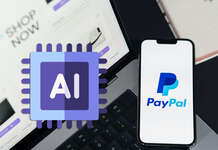When diving into mobile apps, especially those for the Android platform, the importance of UI (user interface) and UX (user experience) design cannot be overlooked. These two elements are the backbone of a successful app and determine how attractive it looks and how effectively it works and interacts with users.
In UI UX design services for Android apps, the focus is on the visual aspects: the layout, color schemes, typography, iconography, and all those elements that users interact with for the first time. A well-thought-out user interface design captures the user’s attention and makes a strong first impression. The Android design system offers a variety of components and guidelines, such as Material Design, that help designers create functional and visually appealing interfaces consistent with platform standards.
On the contrary, UX design delves into the psychological aspect of interacting with the application. It’s about the feeling of the experience. Is the app intuitive or confusing? Fluid or clumsy? UX design answers these questions by analyzing user behavior and preferences. It involves optimizing the navigation flow, ensuring that the application responds to user input in a logical and beneficial way, and ensuring that processes such as logging in, searching for information, or making purchases are streamlined and hassle-free. The synergy of both creates an environment where users enjoy a beautiful application and navigate it with ease and efficiency.
For Android, this means adhering to specific guidelines set by Google but also considering the wide variety of devices and screen sizes that run the Android operating system. The goal is to offer consistency and accessibility, ensuring that users can have a positive and consistent experience regardless of device.
Enter Android app builders, especially ones that require no code, like AppMaster. These platforms have dramatically changed the development game, democratizing the process and allowing people with little to no technical experience to create custom UI/UX designs. They feature a wide range of pre-built templates that adhere to Android UI/UX principles, feature a simplified drag-and-drop design approach, and allow for detailed customization to fit each unique business requirement. This makes the path to creating an easy-to-use, professional-looking Android app more accessible than ever.
No-codes have gained significant momentum in recent years and the Android ecosystem is no exception. The appeal of app creators-code lies in its promise to democratize the app development process. Traditional app development requires a deep understanding of programming languages such as Java or Kotlin for Android and a firm grasp of complex development environments. These barriers can make app creation inaccessible to entrepreneurs, small businesses, and individuals with innovative ideas but limited technical expertise or resources.
Android’s significant market share makes it a priority platform for companies looking to interact with a broad user base through mobile applications. Android app creatorsNo-code have entered this space, allowing users to create applications through graphical user interfaces with editor drag-and-drop and pre-designed components. These tools offer a layer of coding abstraction, allowing users to focus on the design and functionality of their applications without the complexities of code.
The growing demand for mobile applications in various industries partly drives the growth of the platform’s no-code. As businesses look to provide value through digital solutions, rapid application deployment becomes crucial. Android app creatorsNo-codeThey accelerate the development process, allowing companies to launch functional applications in a fraction of the time it would take using traditional methods.
Platforms likeAppMasterThey simplify application development and ensure that the result is professional and enterprise-grade. These platforms allow for custom UI/UX design, which is often a differentiator in the crowded app market. With these advantages, the creatorsno-code. They are leveling the playing field, allowing smaller players to compete with larger organizations in terms of digital innovation.
Additionally, the rise of app creators-code has been driven by the proliferation of digital transformation initiatives. As organizations adapt to a more technology-centric mode of operation, they need fast and agile solutions that platforms no-code. They are uniquely positioned to provide. The cost savings associated with development no-code, both in terms of time and financial resources, increase their attractiveness, making them a strategic option for companies seeking to optimize their development efforts.
As the Android operating system continues to evolve and integrate new features, app creators no-code. They are also evolving, continually integrating new functionality that pushes the boundaries of what can be achieved without writing a line of code. As this trend continues, we can expect to see an even greater variety of sophisticated apps developed using creators. no-code, reflecting the potential of these platforms to transform the application development sphere.
Benefits of using No-Code platforms for custom UI/UX designs
In an era where user experience can make or break an app, platforms no-code present a compelling solution for businesses and individuals looking to create custom UI/UX designs without delving into the complexities of traditional coding. Here’s why these platforms, likeAppMaster, there are more and more reference tools for the development of Android applications:
- Democratization of application development: platformsNo-codeThey break down barriers to entry, allowing people with little or no programming knowledge to participate in creating applications. This opens up a world of possibilities for entrepreneurs and creators who can now independently bring their ideas to life.
- Fast time to market – with pre-designed templates and features drag-and-drop, the platforms no-codeThey significantly speed up the development process. This rapid deployment capability means companies can iterate quickly and capitalize on market opportunities in real time.
- Cost reduction – Hiring a development team can be expensive, especially for startups and small businesses. The platformsNo-codeThey reduce or even eliminate the need for large equipment, resulting in significant cost savings.
- Focus on design and user experience: Without worrying about backend complexities, creators can dedicate their energy and resources to perfecting the UI/UX of the app, ensuring the final product is intuitive, engaging, and retains users.
- High customization: contrary to the myth that no code there is no flexibility, platforms like AppMaster. They offer a high degree of customization, allowing developers to tailor every aspect of the app’s design and functionality to meet specific needs.
- Seamless integrations: the platformsNo-codeThey come equipped with several integration options, meaning apps can easily connect with third-party services, tools, and APIs to expand their capabilities and improve the user experience.
- Collaborative development: These platforms typically have collaborative tools that allow teams to work together in real-time, streamlining the design process and improving communication between stakeholders.
- Ease of update: Updating a traditional application can be cumbersome, but platforms do not code. They simplify the process. Changes can be made visually and propagated throughout the application with a few clicks, ensuring that the application stays up to date with the user’s needs and preferences.
- Risk mitigation: since the development code requires less investment and can be achieved more quickly, the risk associated with application development is substantially reduced. If an app concept doesn’t work, less time and resources are wasted, and the feedback loop is much tighter, encouraging continuous improvement.
- Long-term sustainability: platformsNo-codeasAppMasterThey keep applications up to date with the latest technologies and practices. They automatically handle updates and patches to the underlying code, ensuring the longevity and security of your application.
The platforms No-code They offer a unique combination of simplicity, speed, and sophistication, making them the perfect choice for those looking to create outstanding Android apps that not only work well but also provide an extraordinary user experience.
As development tools no-code continue to transform the technology industry, select the Android app builder no-code. Appropriate design is crucial to creating apps with a personalized, engaging user interface (UI) and intuitive user experience (UX). A platform a-code Feature-rich ensures your Android app is functional and offers an attractive, easy-to-use interface that aligns with your business needs. Here are some of the key features to look for in Android app builders with no code that adapts to custom UI/UX design:
Intuitive drag-and-drop interface
The core of application development code is the user interface of the app builder itself. A simple and responsive interface drag-and-drop simplifies the design process, making it accessible even to those with minimal technical knowledge. It should allow you to effortlessly place and configure widgets, such as buttons, text fields, and images, in real-time, providing immediate visual feedback.
Diverse Template Library
A library of customizable templates serves as a springboard for your design, allowing you to choose from a variety of pre-designed user interface elements that you can adapt to your brand identity and the needs of your users. Whether you’re building an eCommerce platform or a task management tool, starting with a template can save time and ensure consistency across multiple screens.
Flexible UI Customization
The platform should offer a high degree of customization, allowing you to modify everything from font sizes and color schemes to the layout of interface elements. This flexibility is essential to creating a unique, branded user interface that stands out in the crowded app market.
Animation and interactivity options
Interactive elements like animations, transitions, and micro-interactions can significantly improve UX. Look for a builder that supports these features, which are critical to maintaining user engagement and providing fluid, dynamic interactions.
Responsive design capabilities
With a wide range of Android devices on the market, it is paramount to ensure that your app looks and works well on different screen sizes and orientations. a creator no-code should enable responsive design, automatically adjusting the user interface to various devices and screen resolutions.
Integration with design tools
Many app builders now integrate with popular design tools like Adobe X, Deither, and Sketch. This allows designers to import their work directly into the app builder, streamlining the design process and ensuring design fidelity.
Advanced functionality support
While basic applications can be easy to create, truly valuable applications often require more sophisticated functionality. Best app builders no-code. They provide advanced features such as API support, databases, and other backend services, taking your Android app to a professional level.
User Feedback Implementations
Gathering and implementing user feedback is vital to perfecting UI/UX. a creator no-codeIdeally, it should allow you to quickly adapt and push updates to your app based on user interactions and feedback, keeping user experience at the forefront of development.
Test and preview modes
A good app builder no-codeIt should offer easy-to-use testing and preview tools that help you evaluate how your app performs on different Android devices before publishing it. This helps you detect and fix any UI/UX issues early in the development process.
Scalability and performance
The platform no-code you need to address the early stages of your app’s life and scale with your growing user base. Look for performance optimization features that ensure your application handles increased traffic and data smoothly.
The emergence of platforms such asAppMasterin the space-codeIt has meant a paradigm shift in the custom application design process. With features like visual BP Designers for mobile apps and the ability to generate, compile, and deploy code, these platforms offer unprecedented speed and efficiency for app development. These features allow users to create custom UI/UX for Android apps without being bogged down by the traditional complexities of software development.
How AppMaster powers custom Android UI/UX design
The appeal of custom UI/UX design in the world of Android app development is undeniable: a well-designed app looks attractive and provides a smooth and intuitive experience for users. In this effort to create the perfect application, AppMaster has emerged as a pioneering platform no-code which offers extensive capabilities to create custom Android apps, focusing on custom UI/UX design.
The approach ofAppMasterto train developers and non-developers in creating custom Android UI/UX designs is multifaceted and emphasizes ease of use, flexibility, and efficiency. The platform eradicates the complexities traditionally associated with the application development cycle by leveraging a comprehensive set of tools within an integrated development environment.
Intuitive drag-and-drop interface
In the heart of AppMaster, you will find an intuitive interface drag-and-drop that democratizes design and development. This visual editor establishes a foundation upon which users can build sophisticated user interface components, regardless of their technical prowess. The functionality of drag-and-drop ensures that elements can be placed precisely, fostering an environment where creativity is only limited by the imagination.
Mobile Business Process Designer
As a complement to the visual design of the user interface, AppMaster incorporates a mobile business process (BP) designer that provides users with the ability to define complex business logic uniquely for each user interface component. This ensures that behind every visually appealing element lies meticulous consideration of user interactions and operational efficiency.
Customizable templates and components
To accelerate development, AppMaster offers a variety of pre-designed templates that serve as a reliable starting point for custom designs. Developers can modify these templates to reflect brand identity and user needs. This flexibility is also seen in customizable components that can be adapted or expanded to push the limits of conventional application design.
Scalable architecture
AppMasterIt is not only concerned with the immediate results of the design, but also with the future scalability of Android applications. The backbone of every application created withAppMasterIt is prepared for high-load use cases, ensuring that as customer bases grow, the application can scale proportionally without problems.
Source code generation and implementation
Once the UI/UX design is satisfactory, AppMaster extends its functionality beyond the design phase. The platform generates source code for the designed application, compiles it, and prepares it for deployment. This code generation process is iterative and adapts to continuous changes and revisions without accumulating technical debt.
User experience testing
Ensuring a polished end-user experience requires rigorous testing and AppMastermakes it easy through its built-in testing tools. Designers and developers can evaluate how their UI/UX options hold up to real-world use, ensuring any adjustments can be made quickly within the interface. no code before final implementation.
Best Practices for Designing UI/UX with No-Code Android App Builders
The attractiveness of platforms no-code is undeniable when it comes to designing UI/UX for Android apps. They democratize app development, allowing people who lack coding experience to participate in creating functional and visually appealing apps. However, navigating these platforms requires a strategic approach to ensure the end product looks great and provides a user experience. Below are practical best practices to guide you through the design process using Android app builders’ no-code:
- Start with a clear understanding of your users: Before you dive into design, define your target audience. It’s sometimes overlooked in the rush to build, but it’s vital to understand who will be using your app and what they need from it. User personas and use case scenarios can help tailor the design to your audience’s preferences and behaviors, ensuring the app is intuitive and effective.
- Use Pre-Built Templates Wisely – Platforms No-code. They usually offer a variety of templates to start the design process. Use these templates not as end products but as a foundation to create a more personalized experience. Tailor them to your brand aesthetic and user journey to avoid a generic look.
- Aim for intuitive navigation: Your app navigation should be self-explanatory. It’s not just about beauty; functionality is key. Make sure menus, buttons, and links are located where users expect to find them.
- Adhere to Android Design Guidelines: Google’s Material Design Guidelines provide a framework for creating consistent UI/UX across all Android devices. Following these guidelines can help ensure that your application feels familiar to users and takes advantage of native components and behaviors.
- Prioritize responsiveness and compatibility: Android devices come in many screen sizes and resolutions. Make sure your design is responsive and looks good on multiple devices, whichever platforms no-code they should facilitate through responsive design features.
- Keep it simple: The best app designs are often the simplest. Clutter can overwhelm users, so look for a minimalist approach focused on key functionality. This doesn’t mean that your design should be boring, but rather that each element should have a purpose.
- Test rigorously on different devices: Consistent testing on different devices and use case scenarios can help identify UX issues that may not have been evident initially. Extensively use the platform’s preview and testing functions no-code to refine the design of your application.
- Incorporate feedback loops: Integrating mechanisms for user feedback within the application allows you to collect information directly from the source. Be prepared to iterate your design based on feedback to continually improve the UX.
- Optimize performance – Even the best-designed application can suffer if it is slow or unresponsive. The platformsNo-codeasAppMasterThey generally offer optimization tools to ensure that your application is not overloaded with unnecessary elements that can degrade performance.
- Stay up to date with trends and platform capabilities: Last but not least, UI/UX design is an ever-evolving field, and staying on top of the latest trends and platform updates is crucial. Regularly explore new features and updates offered by the platform no-code to improve the design capabilities of your application. A logical flow from one screen to the next will minimize frustration and abandonment.
By implementing these best practices, you will be on the right path to creating a user-centric Android app with attractive and efficient UI UX design services. Remember that with platforms likeAppMaster, you’re not alone on this journey – use their resources, support, and community to guide you through any challenges and further leverage the platform’s potential for your unique design needs.
Common Challenges and Solutions in No-Code UI/UX Design
Creating a custom user interface (UI) and user experience (UX) using platforms no-code is generally a simpler process than traditional coding. However, designers and developers may still encounter certain obstacles along the way. Let’s dive into some of the most common challenges faced during UI/UX design no-code and let’s explore practical solutions to these problems.
Limited customization options
A challenge often encountered is that the tools have no code. They may have customization limits. While they offer a wide selection of pre-designed elements, there may not be enough options for those looking to implement unique or highly specialized designs.
Solution: To solve this problem, you can explore platforms known for their highly customizable widgets and interactive elements.AppMaster, for example, allows users to define custom logic for each design component, ensuring that the UI/UX meets specific requirements.
Difficulty maintaining design consistency
Maintaining a consistent design across your entire app can be challenging, especially across different screens and features.
Solution: Use the platform’s theme management tools, if available, to ensure consistency in color schemes, typography, and other design elements. Periodically review the application’s UI/UX to identify inconsistencies and apply global styles wherever possible.
Integration of advanced features and functionalities
It is possible that the platformsNo-codes may not always support advanced features or custom functionality out of the box.
Solution: Search platforms with no code that offers extensibility through APIs or custom code blocks. This allows you to add complex functionality without leaving the environment no-code. Additionally, some platforms may have a marketplace of plugins or extensions that can add these features with minimal effort.
Performance overhead
Applications created with tools no-code. They can sometimes suffer from performance issues due to the additional overhead of the platform runtime.
Solution: Go Platform No-code that compiles applications to native code, which can significantly improve performance. Be sure to optimize the design by avoiding unnecessary elements and optimizing image size and resolution for mobile devices.
Inadequate testing environments
Testing UI/UX effectively is vital to the success of any application. Some platforms may not provide complete testing environments, which can lead to a poor end-user experience.
Solution: Choose platforms that offer built-in testing modules that allow you to simulate user interactions and perform usability testing. Also, use beta testers to get real-world feedback before finalizing the UI/UX.
Ensure accessibility
Providing an inclusive experience is essential, but solutions may no-code. Don’t always emphasize accessibility features.
Solution: Prioritize tools no-code that comply with Web Content Accessibility Guidelines (WCAG) and other accessibility standards. Include accessibility features like screen reader support, text scaling, and high contrast modes in your design process.
Keeping up with UI/UX trends
The UI/UX environment is continually evolving and what is trendy and easy to use today may not be trendy and easy to use tomorrow. The tools No-code can lag behind when it comes to offering the latest design trends.
Solution: Stay informed on the latest UI/UX trends and research platforms no-code that frequently update their feature set. Interact with the platform community to share ideas and knowledge on upcoming trends and how to implement them within the constraints of the environment no-code.
Industry Insights: Custom UI/UX Android App Success Stories
In the application development sector no-code, success stories abound where companies have translated ideas into fully functional and aesthetically pleasing Android apps without writing a single line of code. Here, we delve into some illustrative examples of companies that have harnessed the power of tools do-code as AppMaster to create custom UI/UX designs that delight users, solidify brand identity, and pave the way to market success.
Empowering Small Businesses: The Boutique Retail App Transformation
A notable case is that of a clothing retail boutique that sought to expand its presence from a physical store to an e-commerce platform optimized for Android users. With no prior programming knowledge, the retailer used app builders’ no-code and leveraged customizable design templates, aligning the look and feel of the app with the sophisticated brand aesthetic they maintained in-store. The result was an intuitive, cutting-edge app that allowed customers to browse collections, purchase items, and even interact with a virtual fitting room feature, thanks to the integration of artificial intelligence tools available through the platform’s ecosystem. no-code.
Revolutionizing hospitality: the journey of a hotel booking app
The success also illuminated the path for a regional hotel chain, which sought to simplify reservations and improve the guest experience. When choosing an Android app builder with no code Focused on UX/UI customization options, the hotel developed an app that offered a seamless booking process combined with virtual tours of rooms and facilities. This innovative approach to hospitality, combining convenience and immersive experiences, led to an increase in direct bookings and reduced reliance on third-party booking platforms.
On-Demand Healthcare: A Breakthrough in Telemedicine Application
Another inspiring example is the healthcare industry, where a telemedicine startup revolutionized the market with a no-code app builder. The startup focused on offering a user-friendly interface that older patients could easily navigate, a crucial need in healthcare technology, by tracing the patient path and using functions drag-and-drop. To create a clear and accessible user interface, the app provided an empathetic user experience that facilitated doctor-patient communication and appointment scheduling, securing the startup’s place as a leader in digital healthcare solutions.
Education Promotion: Personalized Learning Experiences
Within the education sector, one notable story involves a language learning platform that has no code to offer personalized and engaging experiences. The platform app featured a sophisticated algorithm that adapted to individual learning rates, requiring a dynamic UI/UX compatible with multiple Android devices. Thanks to the versatility of app creators’ no-code, the platform achieved a responsive and interactive design that responded to student input, making education accessible and technologically advanced.
Nonprofit Innovation: Community Service Made Accessible
A non-profit organization represents another success story and demonstrates that solutions-code. They serve more than just commercial interests. To increase community engagement, the organization developed an Android app that featured volunteer opportunities, donation platforms, and event calendars with real-time updates. The custom UI UX design agency allowed users to effortlessly engage with the cause, increasing engagement and awareness of the organization’s goals.






